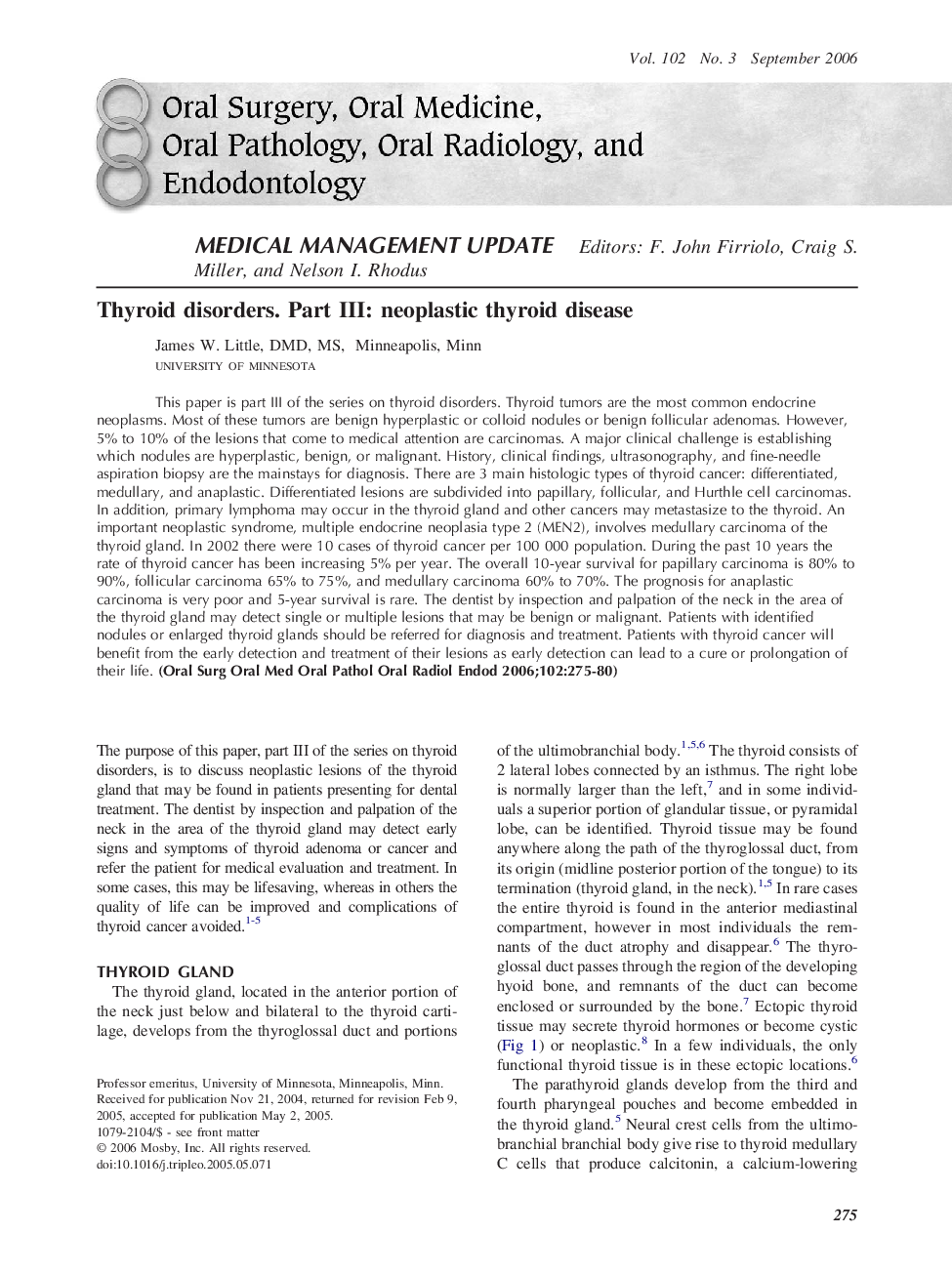| Article ID | Journal | Published Year | Pages | File Type |
|---|---|---|---|---|
| 3169873 | Oral Surgery, Oral Medicine, Oral Pathology, Oral Radiology, and Endodontology | 2006 | 6 Pages |
This paper is part III of the series on thyroid disorders. Thyroid tumors are the most common endocrine neoplasms. Most of these tumors are benign hyperplastic or colloid nodules or benign follicular adenomas. However, 5% to 10% of the lesions that come to medical attention are carcinomas. A major clinical challenge is establishing which nodules are hyperplastic, benign, or malignant. History, clinical findings, ultrasonography, and fine-needle aspiration biopsy are the mainstays for diagnosis. There are 3 main histologic types of thyroid cancer: differentiated, medullary, and anaplastic. Differentiated lesions are subdivided into papillary, follicular, and Hurthle cell carcinomas. In addition, primary lymphoma may occur in the thyroid gland and other cancers may metastasize to the thyroid. An important neoplastic syndrome, multiple endocrine neoplasia type 2 (MEN2), involves medullary carcinoma of the thyroid gland. In 2002 there were 10 cases of thyroid cancer per 100 000 population. During the past 10 years the rate of thyroid cancer has been increasing 5% per year. The overall 10-year survival for papillary carcinoma is 80% to 90%, follicular carcinoma 65% to 75%, and medullary carcinoma 60% to 70%. The prognosis for anaplastic carcinoma is very poor and 5-year survival is rare. The dentist by inspection and palpation of the neck in the area of the thyroid gland may detect single or multiple lesions that may be benign or malignant. Patients with identified nodules or enlarged thyroid glands should be referred for diagnosis and treatment. Patients with thyroid cancer will benefit from the early detection and treatment of their lesions as early detection can lead to a cure or prolongation of their life.
